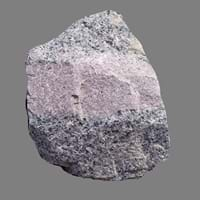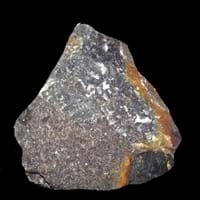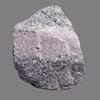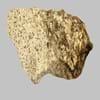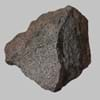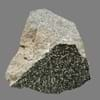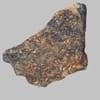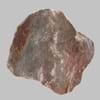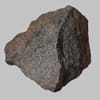Definition
Aplite is a fine-grained granite composed mainly of feldspar and quartz
Dolomite is a sedimentary rock containing more than 50 percent of the mineral dolomite by weight
Origin
Iran
Southern Alps, France
Discoverer
Unknown
Dolomieu
Etymology
From German Aplit, from Greek haploos simple + -ite
From French, from the name of Dolomieu (1750–1801), the French geologist who discovered the rock
Class
Igneous Rocks
Sedimentary Rocks
Sub-Class
Durable Rock, Hard Rock
Durable Rock, Medium Hardness Rock
Group
Plutonic
Not Applicable
Other Categories
Fine Grained Rock, Opaque Rock
Coarse Grained Rock, Fine Grained Rock, Medium Grained Rock, Opaque Rock
Texture
Granular, Graphic
Earthy
Color
Black, Grey, Orange, Pink, White
Black, Brown, Colourless, Green, Grey, Pink, White
Durability
Durable
Durable
Scratch Resistant
Yes
Yes
Appearance
Veined or Pebbled
Glassy or Pearly
Interior Uses
Bathrooms, Countertops, Decorative Aggregates, Entryways, Floor Tiles, Homes, Hotels, Kitchens, Stair Treads
Decorative Aggregates, Homes, Interior Decoration
Exterior Uses
As Building Stone, As Facing Stone, Bridges, Paving Stone, Near Swimming Pools, Office Buildings, Resorts
Garden Decoration, Office Buildings
Other Architectural Uses
Curbing
Not Yet Used
Construction Industry
As Dimension Stone
As a Flux in the Production of Steel and Pig Iron, As a Sintering Agent in Steel Industry to process Iron Ore, As Dimension Stone, Cement Manufacture, for Road Aggregate, Making natural cement, Manufacture of Magnesium and Dolomite Refractories, Production of Glass and Ceramics, Serves as an Oil and Gas Reservoir rock
Medical Industry
Not Yet Used
Taken as a Supplement for Calcium or Magnesium
Antiquity Uses
Artifacts, Monuments, Sculpture, Small Figurines
Artifacts, Jewellery, Monuments, Sculpture, Small Figurines
Commercial Uses
Curling, Gemstone, Laboratory bench tops, Small Sculptures, Tombstones
An Oil and Gas Reservoir, As a Feed Additive for Livestock, Gemstone, Metallurgical Flux, Production of Lime, Soil Conditioner, Source of Magnesia (MgO)
Types
Not Available
Boninite and Jasperoid
Features
Available in lots of colors, Available in Lots of Colors and Patterns, Is one of the oldest rock
Host Rock for Lead, Traps for subsurface fluids like Oil and Natural Gas., Zinc and Copper Deposits
Archaeological Significance
Famous Monuments
Data Not Available
Data Not Available
Famous Sculptures
Data Not Available
Data Not Available
Pictographs
Not Used
Used
Petroglyphs
Not Used
Used
Formation
Aplites belong to intrusive igneous rocks which are mostly quart and alkali feldspar and are formed from residual eutectic granitic liquids and represent the final crystallization products of magma.
Dolomite rocks are originally deposited as calcite or aragonite rich limestone, but during diagenesis process, the calcite or aragonite is transformed into dolomite.
Mineral Content
Amphibole, Biotite, Feldspar, Hornblade, Micas, Muscovite or Illite, Plagioclase, Pyroxene, Quartz
Clay Minerals, Pyrite, Quartz, Sulfides
Compound Content
Aluminium Oxide, CaO, Iron(III) Oxide, FeO, Potassium Oxide, MgO, MnO, Sodium Oxide, Phosphorus Pentoxide, Silicon Dioxide, Titanium Dioxide
NaCl, CaO, Carbon Dioxide, Magnesium Carbonate, MgO
Types of Metamorphism
Burial Metamorphism, Cataclastic Metamorphism, Hydrothermal Metamorphism, Regional Metamorphism
Burial Metamorphism, Cataclastic Metamorphism, Contact Metamorphism
Types of Weathering
Chemical Weathering, Mechanical Weathering
Not Applicable
Types of Erosion
Chemical Erosion, Coastal Erosion, Wind Erosion
Not Applicable
Grain Size
Very fine-grained
Medium to Fine Coarse Grained
Fracture
Not Available
Conchoidal
Porosity
Less Porous
Less Porous
Luster
Dull to Pearly to Subvitreous
Vitreous and Pearly
Cleavage
Not Available
Perfect
Toughness
Not Available
1
Specific Gravity
2.6
2.8-3
Transparency
Opaque
Transparent to Translucent
Density
2.6 g/cm3
2.8-2.9 g/cm3
Resistance
Heat Resistant, Wear Resistant
Heat Resistant, Pressure Resistant, Wear Resistant
Deposits in Eastern Continents
Asia
China, India, Iran, Saudi Arabia, Sri Lanka, Taiwan, Thailand, Turkey, Vietnam
China, India
Africa
Angola, Egypt, Madagascar, Namibia, Nigeria, South Africa
Morocco, Namibia
Europe
Austria, Belgium, Finland, France, Germany, Italy, Norway, Sardinia, Spain, Switzerland, The Czech Republic, Venezuela
Austria, Italy, Romania, Spain, Switzerland
Others
Not Yet Found
Not Yet Found
Deposits in Western Continents
North America
Canada, USA
Mexico, USA
South America
Not Yet Found
Brazil, Colombia
Deposits in Oceania Continent
Australia
Not Yet Found
New South Wales, Queensland, Yorke Peninsula
All about Aplite and Dolomite Properties
Know all about Aplite and Dolomite properties here. All properties of rocks are important as they define the type of rock and its application. Aplite belongs to Igneous Rocks while Dolomite belongs to Sedimentary Rocks.Texture of Aplite is Granular, Graphic whereas that of Dolomite is Earthy. Aplite appears Veined or Pebbled and Dolomite appears Glassy or Pearly. The luster of Aplite is dull to pearly to subvitreous while that of Dolomite is vitreous and pearly. Aplite is available in black, grey, orange, pink, white colors whereas Dolomite is available in black, brown, colourless, green, grey, pink, white colors. The commercial uses of Aplite are curling, gemstone, laboratory bench tops, small sculptures, tombstones and that of Dolomite are an oil and gas reservoir, as a feed additive for livestock, gemstone, metallurgical flux, production of lime, soil conditioner, source of magnesia (mgo).
